Gregory C. Beroza
Double Difference Earthquake Location with Graph Neural Networks
Oct 25, 2024
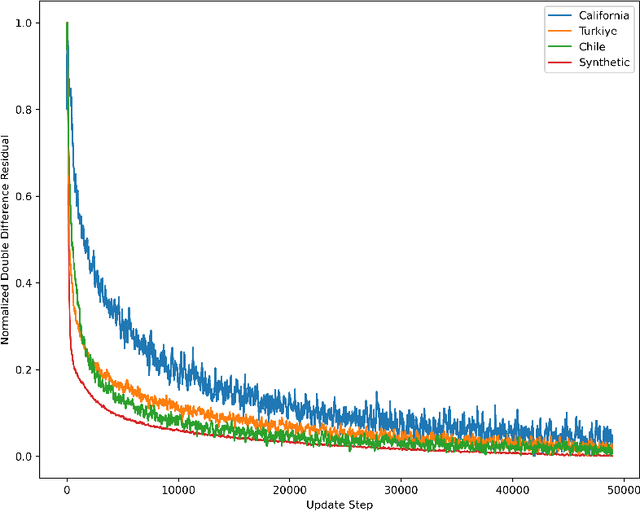
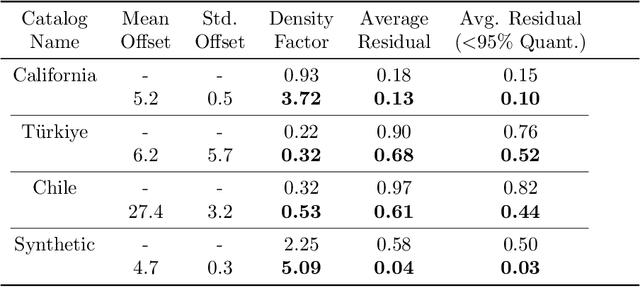
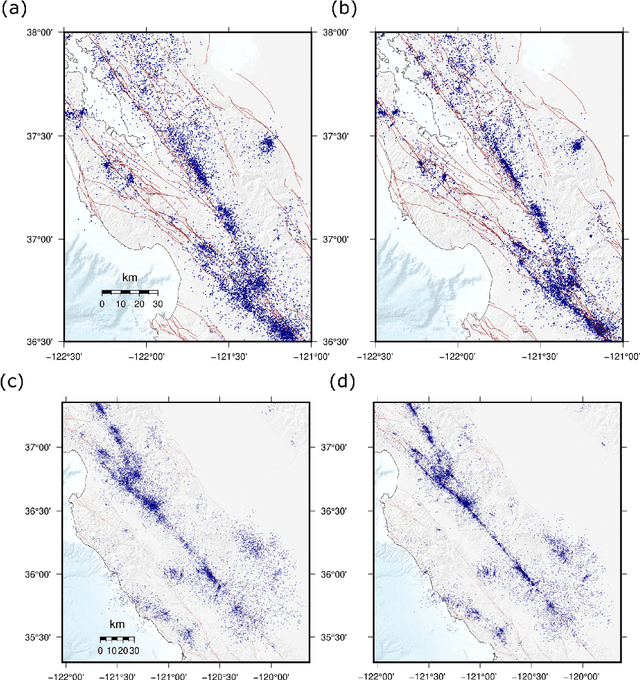
Abstract:Double difference earthquake relocation is an essential component of many earthquake catalog development workflows. This technique produces high-resolution relative relocations between events by minimizing differential measurements of the arrival times of waves from nearby sources, which highlights the resolution of faults and improves interpretation of seismic activity. The inverse problem is typically solved iteratively using conjugate-gradient minimization, however the cost scales significantly with the total number of sources and stations considered. Here we propose a Graph Neural Network (GNN) based earthquake double-difference relocation framework, Graph Double Difference (GraphDD), that is trained to minimize the double-difference residuals of a catalog to locate earthquakes. Through batching and sampling the method can scale to arbitrarily large catalogs. Our architecture uses one graph to represent the stations, a second graph to represent the sources, and creates the Cartesian product graph between the two graphs to capture the relationships between the stations and sources (e.g., the residuals and travel time partial derivatives). This key feature allows a natural architecture that can be used to minimize the double-difference residuals. We implement our model on several distinct test cases including seismicity from northern California, Turkiye, and northern Chile, which have highly variable data quality, and station and source distributions. We obtain high resolution relocations in these tests, and our model shows adaptability to variable types of loss functions and location objectives, including learning station corrections and mapping into the reference frame of a different catalog. Our results suggest that a GNN approach to double-difference relocation is a promising direction for scaling to very large catalogs and gaining new insights into the relocation problem.
Earthquake Phase Association with Graph Neural Networks
Sep 15, 2022
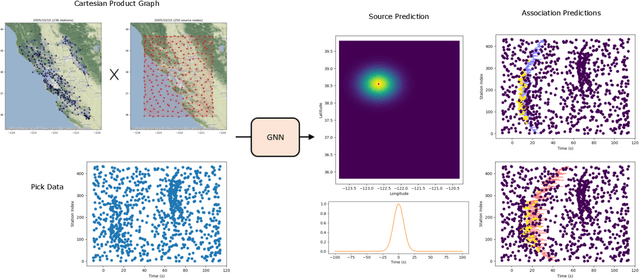

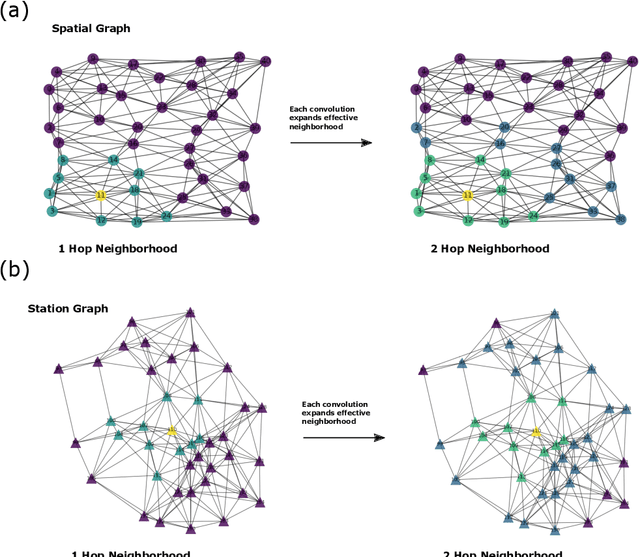
Abstract:Seismic phase association connects earthquake arrival time measurements to their causative sources. Effective association must determine the number of discrete events, their location and origin times, and it must differentiate real arrivals from measurement artifacts. The advent of deep learning pickers, which provide high rates of picks from closely overlapping small magnitude earthquakes, motivates revisiting the phase association problem and approaching it using the methods of deep learning. We have developed a Graph Neural Network associator that simultaneously predicts both source space-time localization, and discrete source-arrival association likelihoods. The method is applicable to arbitrary geometry, time-varying seismic networks of hundreds of stations, and is robust to high rates of sources and input picks with variable noise and quality. Our Graph Earthquake Neural Interpretation Engine (GENIE) uses one graph to represent the station set and another to represent the spatial source region. GENIE learns relationships from data in this combined representation that enable it to determine robust source and source-arrival associations. We train on synthetic data, and test our method on real data from the Northern California (NC) seismic network using input generated by the PhaseNet deep learning phase picker. We successfully re-detect ~96% of all events M>1 reported by the USGS during 500 random days between 2000$\unicode{x2013}$2022. Over a 100-day continuous interval of processing in 2017$\unicode{x2013}$2018, we detect ~4.2x the number of events reported by the USGS. Our new events have small magnitude estimates below the magnitude of completeness of the USGS catalog, and are located close to the active faults and quarries in the region. Our results demonstrate that GENIE can effectively solve the association problem under complex seismic monitoring conditions.
Bayesian-Deep-Learning Estimation of Earthquake Location from Single-Station Observations
Dec 03, 2019



Abstract:We present a deep learning method for single-station earthquake location, which we approach as a regression problem using two separate Bayesian neural networks. We use a multi-task temporal-convolutional neural network to learn epicentral distance and P travel time from 1-minute seismograms. The network estimates epicentral distance and P travel time with absolute mean errors of 0.23 km and 0.03 s respectively, along with their epistemic and aleatory uncertainties. We design a separate multi-input network using standard convolutional layers to estimate the back-azimuth angle, and its epistemic uncertainty. This network estimates the direction from which seismic waves arrive to the station with a mean error of 1 degree. Using this information, we estimate the epicenter, origin time, and depth along with their confidence intervals. We use a global dataset of earthquake signals recorded within 1 degree (~112 km) from the event to build the model and to demonstrate its performance. Our model can predict epicenter, origin time, and depth with mean errors of 7.3 km, 0.4 second, and 6.7 km respectively, at different locations around the world. Our approach can be used for fast earthquake source characterization with a limited number of observations, and also for estimating location of earthquakes that are sparsely recorded -- either because they are small or because stations are widely separated.
A Machine-Learning Approach for Earthquake Magnitude Estimation
Nov 14, 2019



Abstract:In this study we develop a single-station deep-learning approach for fast and reliable estimation of earthquake magnitude directly from raw waveforms. We design a regressor composed of convolutional and recurrent neural networks that is not sensitive to the data normalization, hence waveform amplitude information can be utilized during the training. Our network can predict earthquake magnitudes with an average error close to zero and standard deviation of ~0.2 based on single-station waveforms without instrument response correction. We test the network for both local and duration magnitude scales and show a station-based learning can be an effective approach for improving the performance. The proposed approach has a variety of potential applications from routine earthquake monitoring to early warning systems.
CRED: A Deep Residual Network of Convolutional and Recurrent Units for Earthquake Signal Detection
Oct 03, 2018
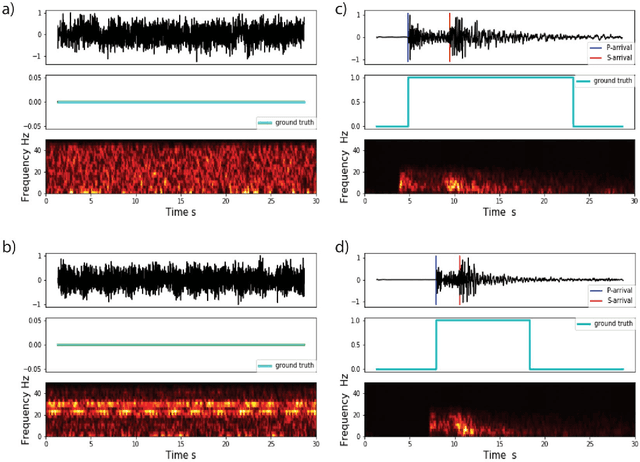

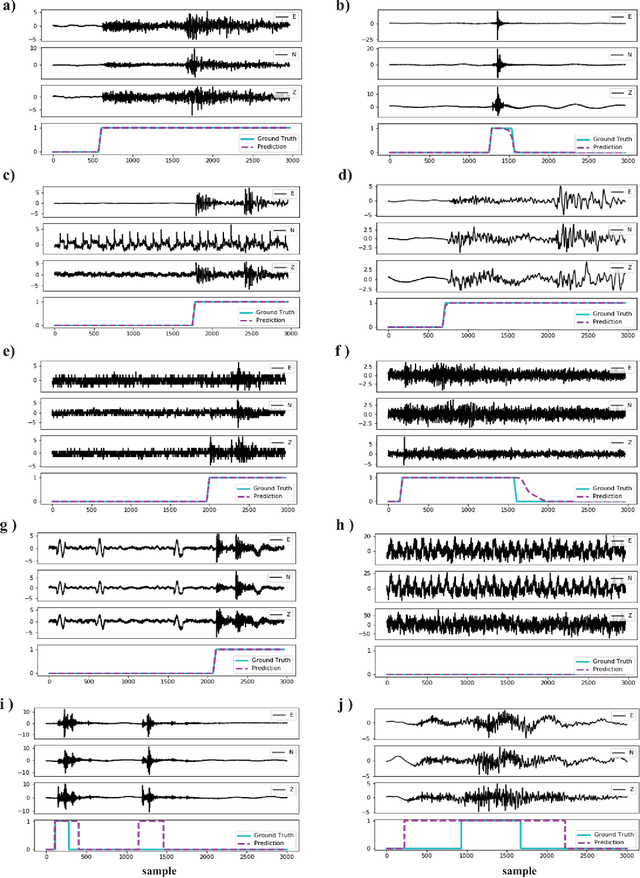
Abstract:Earthquake signal detection is at the core of observational seismology. A good detection algorithm should be sensitive to small and weak events with a variety of waveform shapes, robust to background noise and non-earthquake signals, and efficient for processing large data volumes. Here, we introduce the Cnn-Rnn Earthquake Detector (CRED), a detector based on deep neural networks. The network uses a combination of convolutional layers and bi-directional long-short-term memory units in a residual structure. It learns the time-frequency characteristics of the dominant phases in an earthquake signal from three component data recorded on a single station. We train the network using 500,000 seismograms (250k associated with tectonic earthquakes and 250k identified as noise) recorded in Northern California and tested it with an F-score of 99.95. The robustness of the trained model with respect to the noise level and non-earthquake signals is shown by applying it to a set of semi-synthetic signals. The model is applied to one month of continuous data recorded at Central Arkansas to demonstrate its efficiency, generalization, and sensitivity. Our model is able to detect more than 700 microearthquakes as small as -1.3 ML induced during hydraulic fracturing far away than the training region. The performance of the model is compared with STA/LTA, template matching, and FAST algorithms. Our results indicate an efficient and reliable performance of CRED. This framework holds great promise in lowering the detection threshold while minimizing false positive detection rates.
 Add to Chrome
Add to Chrome Add to Firefox
Add to Firefox Add to Edge
Add to Edge